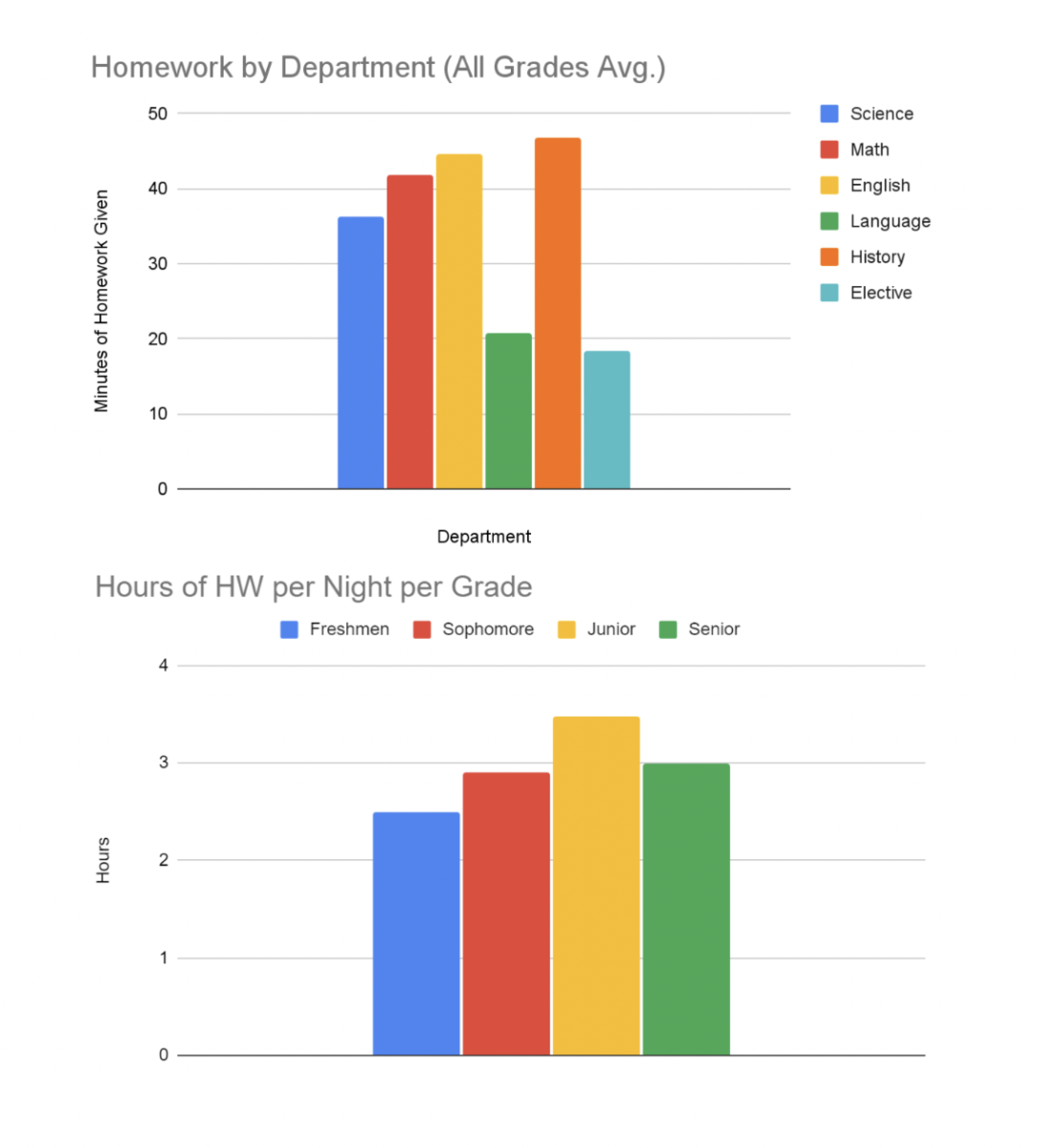Homework can be a contentious topic. The various moans and complaints from students can be heard both at school and at home. Students have attributed homework with negatively affecting their sleep and mental health. A Stanford report found that “56% of students considered homework a primary source of stress…less than 1% of students said homework was not a stressor.”
However, homework shouldn’t be affecting a student’s sleep nor mental health as much. The National Education Association (NEA) and the National Parent Teacher Association recommend that students spend 10 minutes per grade level per night on homework. What this means is that each year the amount of total homework a student receives increases by ten minutes. So, a freshman should receive 1 1⁄2 hours of homework, a sophomore should receive 100 minutes, a junior 110 minutes, and a senior two hours. Stanford University research supports this, suggesting that homework in excess of two hours may be counterproductive.
The reality is that the amount of homework Parker students are receiving exceeds these numbers. The freshman class reported an average nightly homework load of 2.5 hours (150 minutes), the sophomores reported 2.9 hours (174), the juniors reported 3.47 hours (208.2 minutes), and the seniors reported three hours (180 minutes) of homework a night.
Most Parker teachers estimated that the homework they give each night (⅝ days a rotation) should be taking students about 30 to 45 minutes to complete. Going back to the recommended amount of homework by the NEA, and assuming that a student is taking five classes that give homework (so they may either have a free period or a low-homework load elective), each class should be giving around 18-25 minutes of homework.
Comparing these numbers, it’s not a horrible difference. Unfortunately, across the grades, most students report a longer time spent on homework, with some classes having an average homework load that is more than twice the recommended or expected amount. The only department of classes that manages to stay within the recommended homework level is the World Language department. For example, Mr. Schaldenbrand believes that learning a language should not be forced. His French students enjoy a relatively low homework load. Instead, he encourages them to explore French culture and language in their free time, and in an enjoyable manner. For example, watching Netflix shows in French.
On the flip side, math is a class that is consistently ranked high in homework load by students throughout all grades with the exception of applied mathematics classes. Students in applied mathematics typically report homework that is within or is close to the recommended amount. In contrast, calculus is the class that gives the most homework at Parker. Senior students reported that each night they typically receive an hour of calculus homework.
Another class that students typically report high amounts of homework is history. The second heftiest class in terms of homework load by a slim margin, US History gives an average of just under an hour of homework a night. Most Parker history teachers gave a rough estimate of 30-45 minutes of homework. So, what could be the cause of these discrepancies?
First of all, it’s important to recognize the difference in priorities between the researchers and experts who first pushed out the data that recommended 10 minutes of homework per grade level, and teachers who assign homework. The researchers took into account factors such as students’ mental health and work/life balance into consideration when formulating their guideline, but these things may vary from student to student. Teachers have a curriculum that they need to finish with the class, and they may (understandably) prioritize that over the aforementioned factors.
An example is calculus. Calculus is well known to be a difficult subject, and requires plenty of practice. When talking to senior Diego Silva, he elaborated on the role of homework in Calculus. “I do think the homework is necessary to keep up with the pace of the class, as the class requires lots of practice, and the homework is the practice you get,” Silva said. He belives that the difficulty of problems had at least some contribution to the time needed to complete the homework.
For humanities classes, the opinion on the necessity of homework can differ. When asked whether they thought all the homework they were getting for their history class was strictly necessary, most juniors replied no. When asked whether he felt the homework he was doing was essential to his understanding of the class, Kaiyen Arana explained, “I don’t think you’re necessarily wasting time doing the work, but I feel that some of that work should be done in class.”
This point is echoed by the NEA. On their website, they provide resources and guides for teachers on how to cut down on the amount of homework they assign. One of the suggestions was incorporating what teachers assigned for homework into class work. However, some teachers and students believe that the homework has an additional benefit: training students. As students reach higher and higher levels of education, homework is devalued. In college, most of one’s grades will be dependent on a couple of tests or projects. However, simultaneously, the necessity for out of school practice also increases. For example, some college classes may take place only once a week. As a result, students need to be able to maintain discipline and prescribe the work they need to themselves.
In Mr. Tyler’s calculus class, students aren’t required to do a set amount of homework. Instead, homework is framed more as a suggestion, where students can pick how much homework out of what is assigned that they need to do. However, if a student consistently performs poorly on tests, and at the same time isn’t diligent with homework, then there may be a correlation between the two.
That leads to the final point to consider, which is that while research shows that two hours of homework is recommended for students’ wellbeing, research also supports that students that spend more time on homework typically perform better in standardized testing.















